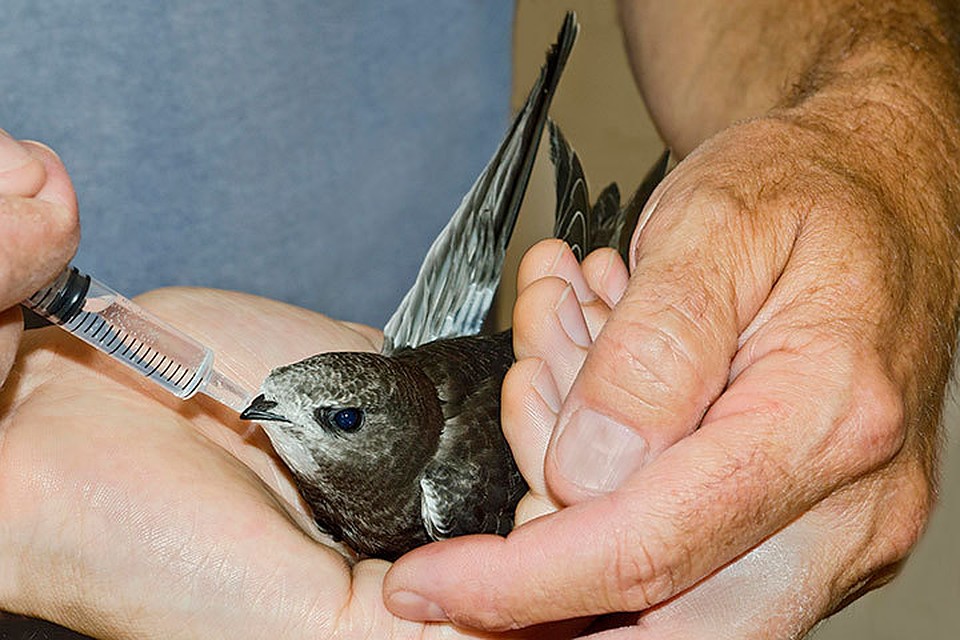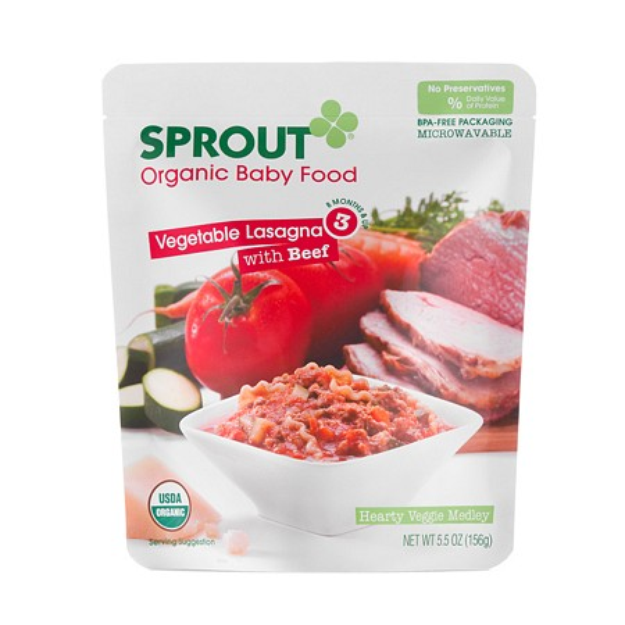What table food to give baby
Giving Baby Finger Foods at 7-8 Months
Written by Rebecca Felsenthal Stewart
Reviewed by Dan Brennan, MD on August 09, 2022
Month 7, Week 3
featureOnce your baby is a pro at eating soft mashed foods, they may be ready to move on to finger foods around 8 months. They have the dexterity to pick the food up and release it or mash it, and will become more efficient and independent as they master the pincer grip around 9 months. At that point they'll be able to use their thumb and forefinger to pick up the small chunks of food.
Your baby may grab at everything on your plate, but follow these guidelines for healthy and safe feedings.
- Start with menu items like pieces of soft cheese; small pieces of pasta or bread; finely chopped soft vegetables; and fruits like bananas, avocado, and ripe peaches or nectarines. These foods should require minimal chewing, as your baby may not yet have teeth. Do NOT let them have hot dogs, raw vegetables, nuts, meats, hard candy, or sticky textures such as nut butters that have increased choking risks at this stage.
- Introduce new foods one at a time in case there are any concers about allergies.
- Chop all foods into soft, bite-sized pieces, 1/2 inch or smaller.
- Watch out for choking hazards: Avoid round, firm foods like carrots, grapes, and hot dogs and skip anything like raw veggies and peanuts. Raisins and popcorn are dangerous for babies.
- Keep up your formula or breastfeeding schedule, but as your baby eats more solids, they’ll naturally start to take less milk. Your baby needs to start eating more solids and drinking less milk for the nutritional value at this stage.
Your Baby's Development This Week
Your baby is getting stronger and may even be moving around, whether they are sliding around on their belly in reverse, scooting on their behind, or actually crawling forward. If you haven’t childproofed your house already, don’t wait any longer!
You may notice these growing signs of motor development:
- Your baby is probably now able to sit on their own for several minutes, without using their hands for support and they may be able to get up into a sitting position all by themselves.

- While you offer them support, they should be able to bounce up and down, and possibly even pull up to a stand.
- Their little hands are increasingly agile -- they are getting better at passing a toy back and forth from one to the other.
You might wonder about:
- Their vision. Your baby should be able to see nearly as far as an adult by now and can track moving objects with their eyes.
- Stranger anxiety. You’re not imagining it: They may fear new people and situations. So give them time to warm up and reassure them if they are upset.
- What they can understand. Your baby might comprehend more than you realize, so it’s important to keep talking to them about everything you’re doing and try to be consistent about the words you use for familiar objects.
Month 7 Week 3 Tips
tips- If food allergies run in the family, talk to your pediatrician about introducing highly allergenic foods like peanuts and eggs.

- Fried foods are not good choices for babies. If you offer them at all, do so rarely.
- Avoid feeding your baby juice unless it is fresh-squeezed.
- By now, your baby’s diet should include grains, fruits, vegetables, and meats, and they should be eating two to three meals a day.
- In addition to rice, barley, or oat cereal, you can introduce grain products your baby can grab, such as toast, crackers, and dry cereal. Avoid any colorful, sugary cereals.
- Sit baby in their high-chair for feeding time. If they eat finger foods while crawling around, they are more likely to choke.
- You’re not done with breast feeding or bottle feeding. Your baby is starting the transition, but breast milk and formula are still key.
- Pureeing or mashing vegetables may make them easier for your baby to eat when they are first transitioning from a liquid diet to solids.
Today on Grow
<blank>Recommended for You
Doctor-approved information to keep you and your family healthy and happy.

- Pregnancy & Baby Bulletin
- Parenting & Children's Health
13 Best Finger Foods for Baby
Introducing finger foods for baby is an exciting and nerve-racking time. Between the mess, possible allergies and potential choking hazards, it’s enough to give some parents white knuckles as they hover over the high chair. But while you should certainly exercise caution, there are lots of great baby finger food ideas that will make mealtime fun and nutritious, and let your growing child practice the important art of self-feeding.
In this article:
When can babies eat finger foods?
Baby finger food safety
How to introduce new finger foods for baby
Best finger foods for baby
When Can Babies Eat Finger Foods?
There’s no hard and fast rule in terms of when babies can start eating finger foods, says William Dietz, MD, PhD, director of the Sumner M. Redstone Global Center for Prevention and Wellness at the Milken Institute School of Public Health at the George Washington University in Washington, DC, and co-editor of the American Pediatric Association’s (AAP) Nutrition: What Every Parent Needs to Know. Rather than focusing on baby’s age, says Dietz, “the first indicator you should look for is that the baby is interested.” So how can you tell when baby’s interest is piqued? Reaching for the food as you’re feeding her, grabbing the bowl or spoon, putting the spoon in her mouth and fussing when she sees you eat (because she wants in!) are all signs your child may be ready. “Babies generally want to feed themselves,” Dietz says. “That’s a normal drive.”
Redstone Global Center for Prevention and Wellness at the Milken Institute School of Public Health at the George Washington University in Washington, DC, and co-editor of the American Pediatric Association’s (AAP) Nutrition: What Every Parent Needs to Know. Rather than focusing on baby’s age, says Dietz, “the first indicator you should look for is that the baby is interested.” So how can you tell when baby’s interest is piqued? Reaching for the food as you’re feeding her, grabbing the bowl or spoon, putting the spoon in her mouth and fussing when she sees you eat (because she wants in!) are all signs your child may be ready. “Babies generally want to feed themselves,” Dietz says. “That’s a normal drive.”
Being able to sit independently is another good clue that babies are physically ready to try finger foods, says Susan M. McCormack, MA, senior speech language pathologist at Children’s Hospital of Philadelphia and a board-certified specialist in swallowing and swallowing disorders.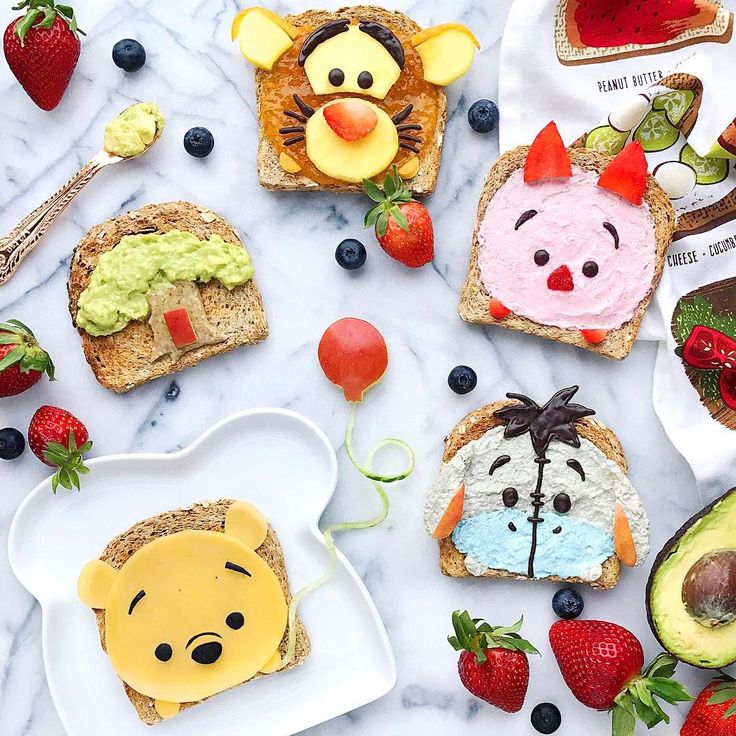 If they can sit up in the high chair, then they might be ready to try their hand at finger foods.
If they can sit up in the high chair, then they might be ready to try their hand at finger foods.
Some guides suggest waiting to introduce baby finger foods until your child has mastered a pincer grasp—the ability to pick up small objects between the thumb and forefinger—but Dietz says this isn’t totally necessary. “Initially when children start to feed themselves, they don’t have a pincer grasp,” he says. “So they’re using their whole hand and putting their hand in their mouth. And that’s fine.”
If you’re waiting for your infant to sprout teeth before moving on from purees, think again. “Babies don’t need teeth to learn to eat solids and learn to chew,” McCormack says. Those strong little gums are perfectly capable of mashing up soft solids—if you’ve ever let baby teethe on your finger, then you have some idea of just how powerful they are!
Baby Finger Food Safety
When choosing the best finger foods for baby—whether you’re starting at 6 months or 9 months—experts agree that it’s best to begin with small pieces of soft food that dissolve easily.
As your infant grows and becomes comfortable eating finger foods, you can branch out, McCormack says. “As a baby develops better tongue patterns to control food pieces as well as more mature chewing, he can better ‘chew’ the foods that break apart, like pieces of fruits and vegetables. A one-year-old can also bite off pieces of food that a 6-month-old can’t.”
Avoid giving baby finger foods that are large, sticky or don’t dissolve easily, because they’re potential choking hazards, Dietz warns. He suggests steering clear of foods like hot dogs, carrots, nuts, grapes, popcorn, candy and globs of peanut butter.
Another thing to keep in mind when you’re picking out the best finger foods for babies is that a lot of adult foods—particularly snacks—can be super salty. “Often parents will doctor a food so it appeals to their tastes, and their taste may have bigger amounts of sodium than a baby’s taste,” Dietz says. When preparing food for baby, leave out the salt whenever possible. (You can always add it separately to your portion if you’re cooking for the family).
(You can always add it separately to your portion if you’re cooking for the family).
How to Introduce New Finger Foods for Baby
When babies first start on finger foods, breast milk and formula will still be their main source of nutrition, followed by purees. You should continue to spoon-feed your child initially, “but during the feeding process, they should also be allowed to feed themselves,” Dietz says. Put some finger food on her high-chair tray and let her try to get it into her mouth in between the spoonfuls of food you’re feeding her. If she gets really frustrated, go ahead and help her out.
Most important, follow your child’s cues and “let your baby be the guide,” McCormack says. If he doesn’t respond positively, take a step back and try again later. But keep in mind that babies often crinkle up their faces when they try something new, which can look like they don’t like something, Dietz says. It can take up to 20 times before they’re used to certain foods. “Parents shouldn’t force food, but they should be persistent in offering,” Dietz says.
McCormack also suggests easing into finger foods by offering thicker purees with a bit of texture to them. “Try alternating bites of the smooth puree with a slightly thicker or mashed food to help your baby get used to the new textures in her mouth,” she says.
Remember, too, that this is a messy process. Parents might want to lay newspaper or an easy-to-clean vinyl tablecloth on the floor, since it’ll be a while (like, years) before your kid manages to get more food in his mouth than on the floor, Dietz advises.
Finally, never leave baby unattended while she’s eating, and keep an eye out for signs of choking. It may be tempting to hold off on introducing finger foods until your child is older, but helping baby develop this skill has multiple benefits, McCormack says, including “development of independence, fine motor skills and self-feeding skills, as well as development of oral patterns to support texture progression.” Whether you start baby finger foods at 6 or 9 months, just follow baby’s lead and let him have fun with it.
Best Finger Foods for Baby
If you’re looking for baby finger food ideas, think about options that are soft, small and easily gummed. Here are a few of the best finger foods for baby to get started—including finger foods for baby with no teeth! While the same finger foods are as appropriate for a 6-month-old as they are for a one-year-old baby, you can begin to offer slightly larger pieces that they can bite off themselves as they become more confident. Stick with these healthy options, and you’ll start baby off on the right path for healthy eating.
Image: The Bump
1. Puffs and dry cereal. Puffs and O-shaped dry cereal are some of the most popular first finger foods for good reason: They let baby practice the pincer grasp by picking up one at a time. And as McCormack explains, they also “mix well with saliva and are easy for the infant to manage in their mouth without choking.”
2. Teething biscuits and lightly toasted bread. Teething biscuits and small pieces of lightly toasted bread are another great starter finger food, since they soften quickly. Just note that some breads can turn gummy and stick in baby’s mouth; lightly toast the bread and cut into very small pieces to avoid a choking hazard. As baby gets older (around 9 to 12 months), you can offer slightly larger pieces or serve bread topped with mashed banana or avocado, or a super-thin layer of hummus or peanut butter.
Just note that some breads can turn gummy and stick in baby’s mouth; lightly toast the bread and cut into very small pieces to avoid a choking hazard. As baby gets older (around 9 to 12 months), you can offer slightly larger pieces or serve bread topped with mashed banana or avocado, or a super-thin layer of hummus or peanut butter.
3. Scrambled eggs. Doctors used to advise waiting to introduce eggs, but the AAP now recommends early exposure to potentially allergenic foods. Which is great news, since scrambled eggs are an ideal early finger food! Keep your love of runny yolks to yourself for now, however, and cook those eggs thoroughly, cut into small pieces and avoid adding salt.
4. Soft fruit. Very ripe fruit is naturally soft, making them some of the best finger foods for babies. Ripe banana, peach, watermelon, raspberries, blueberries and cantaloupe cut into small pieces are all great finger food options.
5. Avocado. A rich source of omega-3 fatty acids—which can help boost baby’s brain development—avocados are, like puffs, often one the first baby finger foods, even when your little one has no teeth. Be warned: Avocado can get messy fast, but it’s well worth it (and can result in some hilarious pics for the baby album).
Be warned: Avocado can get messy fast, but it’s well worth it (and can result in some hilarious pics for the baby album).
6. Pasta. Though recipes often recommend cooking pasta al dente, when it comes to feeding baby, you’ll want to slightly overcook it so it’s nice and soft. To start, try small pasta shapes like orzo or mini shells, or cut up fusilli or penne. Initially serve it plain, but as baby is introduced to more foods you can toss the pasta in a little butter, olive oil or low-sodium tomato sauce.
7. Tofu. Whether cooked or uncooked, tofu is a wonderful plant-based source of protein and a perfect finger food for babies. Opt for firm tofu, which is still quite soft, as opposed to soft or silken tofu, which will likely fall apart in baby’s hand and frustrate her.
8. Cooked vegetables. Though it will be a while before baby can hit the crudités platter, cooked vegetables make excellent baby finger foods. To get the most nutrients out of your vegetables, steam or roast them until soft, and, of course, cut them into small pieces.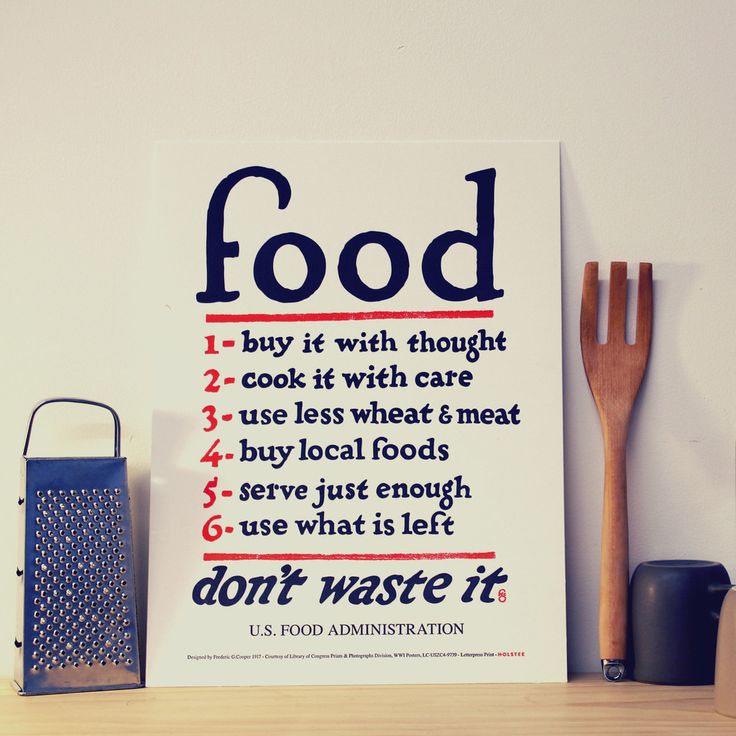 Try sweet potato, carrot, broccoli, cauliflower or beets (opt for yellow beets for less mess) to start. As baby gets bigger, you can offer steamed carrot sticks or peeled, roasted sweet potato wedges.
Try sweet potato, carrot, broccoli, cauliflower or beets (opt for yellow beets for less mess) to start. As baby gets bigger, you can offer steamed carrot sticks or peeled, roasted sweet potato wedges.
9. Cheese. If baby has shown no signs of a dairy allergy, then it’s perfectly safe to introduce soft cubes of cheese as early as 6 months. Opt for small bites of a pasteurized cheese that’s soft but not overly sticky or stinky, like Monterey Jack or cheddar.
10. Beans. Looking for more protein-rich, vegetarian baby finger foods? Try beans. Opt for canned, low-sodium beans for convenience, or soak and cook dry beans yourself to save money (they’ll freeze well too!). When first introducing beans, smash them just a bit between your fingers before serving to baby.
11. Homemade muffins. While store-bought muffins are often loaded with sugar, there are plenty of healthy muffin recipes out there. Use whole-wheat flour, sweeten with applesauce instead of sugar and add healthy ingredients like mashed banana or grated zucchini. Bake in a mini muffin tin or use a standard-size tin, and, once baked, break off into small pieces for baby.
Bake in a mini muffin tin or use a standard-size tin, and, once baked, break off into small pieces for baby.
12. Meat. After soft foods, diced chicken breast and ground beef are pediatrician-approved next-stage finger foods for baby. Just make sure they’re thoroughly cooked and cut into very small pieces.
13. Fish. Fish is another allergenic food that doctors now say can be introduced before baby is a year old. Be sure it’s thoroughly cooked, and opt for a low-mercury fish like flounder, cod or salmon. Most important, make sure to remove any tiny bones.
Please note: The Bump and the materials and information it contains are not intended to, and do not constitute, medical or other health advice or diagnosis and should not be used as such. You should always consult with a qualified physician or health professional about your specific circumstances.
Plus, more from The Bump:
Baby-Led Weaning Basics
Why Variety Matters in Baby’s First Foods
The Dos and Don’ts of Homemade Baby Food
what can be given, what fruits and vegetables, how to feed a 7-month-old baby on breast or artificial feeding
Healthy nutrition allows the baby to grow and develop properly. Despite the fact that breast milk remains the basis of the diet, complementary foods also become important for the child. Acquaintance with new products should be carried out carefully, starting with a small amount, monitoring the reaction and getting used to changes in nutrition. What can you eat at 7 months? The list is replenished with fruits and vegetables, cereals and mashed meats, and you can drink children's tea or water.
Despite the fact that breast milk remains the basis of the diet, complementary foods also become important for the child. Acquaintance with new products should be carried out carefully, starting with a small amount, monitoring the reaction and getting used to changes in nutrition. What can you eat at 7 months? The list is replenished with fruits and vegetables, cereals and mashed meats, and you can drink children's tea or water.
Content: Hide
- Acquaintance with new products
- Features of the introduction of new products in the menu of new products
- Approximate diet in 7 months
- In what form to give products
- The diet of the baby at 7 months
- Important recommendation
Getting to know new products
You need to start feeding your baby gradually, moving from simple to complex. At first, it is better to use one-component products - vegetable purees or cereals. Fruits should be introduced after them, as a pleasant addition to the main course. Over time, you can add new ingredients, increase portions and make the consistency thicker, with pieces of fruit or vegetables. At the same time, the feeding scheme for each baby is individual.
Over time, you can add new ingredients, increase portions and make the consistency thicker, with pieces of fruit or vegetables. At the same time, the feeding scheme for each baby is individual.
Features of the introduction of new products in the menu
Pay close attention to the signals your child gives you. He is probably already full if:
- turns away from the spoon and closes his mouth;
- is easily distracted by extraneous factors;
- pushes and tries to throw food away;
- starts to eat much more slowly.
It is normal if the amount of food varies from feeding to feeding. However, if the child has become restless, an intestinal disorder or a rash has appeared, then complementary foods should be discontinued and wait until all symptoms disappear, and then offer another product. Bad experiences should also be reported to the pediatrician.
Approximate diet
The child should have a clear daily routine, this also applies to the organization of nutrition.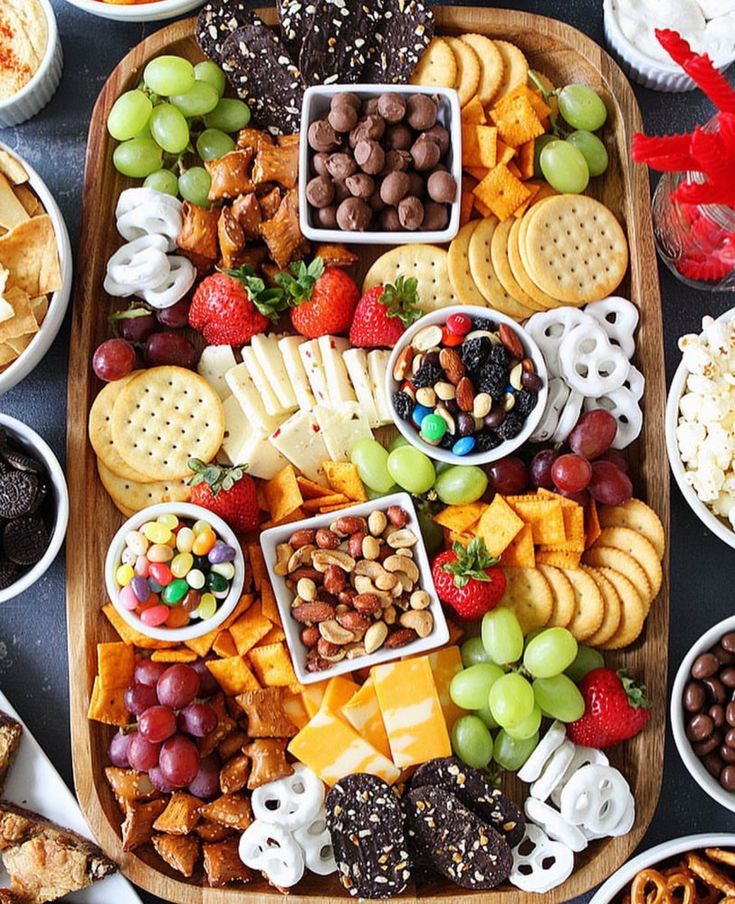 As a rule, children eat five times a day. An example menu might look like this.
As a rule, children eat five times a day. An example menu might look like this.
First meal. Occurs at 6 am and consists of mother's milk or special formula if the baby is formula-fed. Doctors usually recommend that you breastfeed your baby for as long as possible, if possible, and add supplemental foods gradually.
Second meal. At 10 am it's time for the children's breakfast. The basis for it is porridge. Also, a child at 7 months old can eat boiled chicken yolk - this is a source of vitamin B12, selenium and phosphorus. During breakfast, you can offer your baby a new product. The child is already hungry enough to try it, and mom will have time to track the reaction throughout the day.
Third meal. Lunch usually starts at 2 p.m. - this is the most satisfying meal, followed by a walk. If in the morning you did not give the baby unfamiliar foods, then you can introduce something new into the diet. Vegetable and / or meat puree, porridge with a vegetable component are suitable for lunch, if the child did not receive porridge in the morning.
Fourth meal. At 6 pm, afternoon tea time. Unfamiliar products should not be present here. The main task of this meal is to replenish the energy spent in the morning and on a walk. Bebi milk porridges contain natural fruit additives and biscuits. The dish is balanced in terms of the composition of nutrients (fats, proteins, carbohydrates) and gives strength for an active evening.
Fifth meal. At 10 pm, the regimen is completed with mother's milk or IV formula. Feeding something else is not worth it in order to exclude overeating, as well as the possible consequences of getting to know new products.
Read also: Complementary foods and dishes
How to give food
The list of what a child can eat at 7 months is already quite wide, compared with crumbs up to six months. Preparing a dish for a baby is not difficult at all. If you decide to feed your child mashed vegetables, then they need to be peeled, boiled and chopped in a blender. Fruit puree is even easier: they don't need to be boiled, although some can be baked beforehand. Particularly hard foods can first be passed through a meat grinder, and then use a blender. Soft fruits are easy enough to grate. If you are giving egg yolk, boil the eggs for at least 15 minutes.
Fruit puree is even easier: they don't need to be boiled, although some can be baked beforehand. Particularly hard foods can first be passed through a meat grinder, and then use a blender. Soft fruits are easy enough to grate. If you are giving egg yolk, boil the eggs for at least 15 minutes.
Why is self-catering not always appropriate? Pediatricians recommend using cereals, mashed potatoes and other industrial products when organizing the nutrition of a child at 7 months. Such complementary foods are produced taking into account strict hygienic requirements, have the necessary degree of grinding and a verified composition, including vitamins, and, if necessary, are enriched with minerals, pre- and probiotics, omega-3 and other biologically active components.
Baby's diet at 7 months
Porridge. At the age of 7 months, porridge is already a familiar product in the baby's diet. During this period, the volume of complementary foods per day is 150 g. Dairy cereals or fruit and cereals, dessert (for an afternoon snack), vegetable and probiotic-enriched porridges of industrial production are selected.
Dairy cereals or fruit and cereals, dessert (for an afternoon snack), vegetable and probiotic-enriched porridges of industrial production are selected.
Vegetable puree. First foods must have soft dietary fiber. Zucchini, pumpkin, broccoli or cauliflower will do. Later, you can add carrots, beets, potatoes. Legumes are recommended to be introduced after 8 months as they can contribute to gas and bloating. Puree for a child should not contain salt or spices. You need to feed the baby gradually, starting with one teaspoon and gradually increasing the portion. For 7 months, the average volume is about 150 g.
Meat puree. If the child is prone to allergic skin reactions to complementary foods, then a rabbit or turkey is a good place to start. If you are allergic to milk proteins, beef and veal should be excluded. With iron deficiency, rabbit meat is recommended - it contains a lot of this substance. Meat puree should be combined with vegetable puree and given at lunchtime.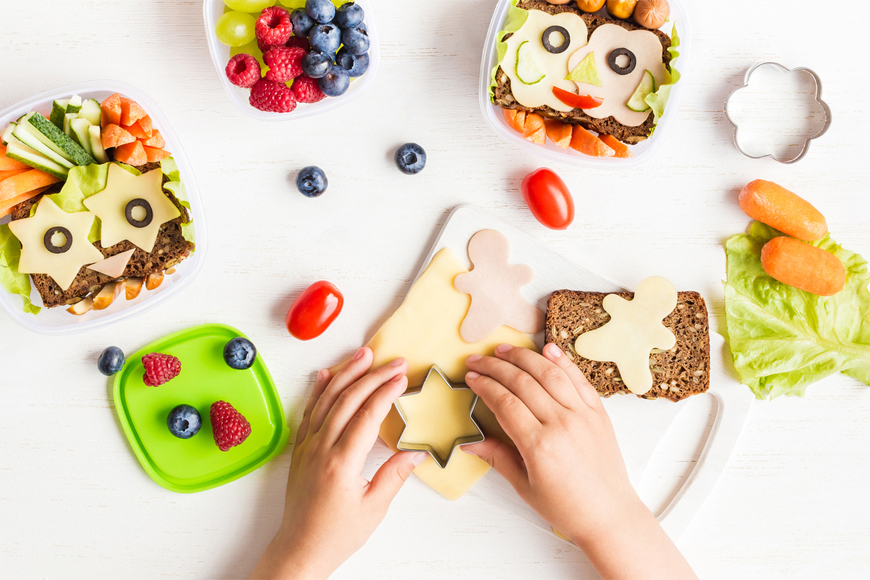 In this combination, iron is well absorbed. In the first days, you can dilute the puree with vegetable broth or breast milk - a familiar taste will help speed up adaptation to new products.
In this combination, iron is well absorbed. In the first days, you can dilute the puree with vegetable broth or breast milk - a familiar taste will help speed up adaptation to new products.
Fruit puree. It is introduced after the child has become acquainted with cereals, vegetables and meat. For the first time, apple or pear puree is suitable - they are easier to digest. Apricots, bananas, plums and berries are medium allergenic foods, so the baby is introduced to them later. Melon, strawberries and citrus fruits can be given at the age of about one year. If you choose ready-made products, then pay attention to the composition: it is better if the puree does not contain sugar, starch and other additional components.
Baby biscuits. It can be given as a treat. Ordinary sweets are not suitable for a child at this age, as well as bread or crackers, to which he can reach. You need to choose specialized products designed specifically for babies. They are introduced into the diet in the same way as other types of complementary foods, given in the morning and monitoring the reaction.
Drinks
A 7-month-old baby should only drink water and baby tea. As for regular tea, WHO does not recommend its consumption by infants and young children. This is due to the fact that such a drink contains tannins, as well as other compounds that bind iron and other minerals, which reduces their bioavailability.
Experts also recommend delaying juices. So, in the “Program for optimizing the feeding of children in the first year of life in the Russian Federation”, the following is said about the drink: “Given their insignificant nutritional value, it is advisable to prescribe only after the introduction of all the main types of complementary foods. In addition, the use of juices, especially between meals, increases the risk of tooth decay. A large volume of juices (above the recommended amount) can serve as a risk factor for overweight in the future.
Important tip
A well-balanced diet can help ensure your child has a healthy diet and the nutrients they need to grow and develop. If your baby suffers from allergies or has other health problems, be sure to consult a pediatrician: he will tell you exactly which foods can be included in the diet and which are not worth it.
If your baby suffers from allergies or has other health problems, be sure to consult a pediatrician: he will tell you exactly which foods can be included in the diet and which are not worth it.
When a child refuses to eat
WHO notes the importance of repeated exposure of children to new foods during the period of complementary feeding in order to develop a healthy positive food system. There is an assumption that the baby should try a new food 8-10 times (at least), and for a clear positive perception of it - 12-15. In any case, parents are advised to offer a new product to the baby many times, since the food that the child initially refuses is often accepted by him later.
#Nutrition for children up to a year #Complementary foods
Rules for the introduction of complementary foods to a child 4-12 months old: the first complementary foods, menus, charts, tables, principles of baby nutrition
experience and the latest scientific developments. They are based on the recommendations of the European Association of Pediatric Gastroenterologists, Hepatologists, Nutritionists ESPGHAN , American Academy of Pediatrics ААР and national recommendations of relevant ministries and associations.
They are based on the recommendations of the European Association of Pediatric Gastroenterologists, Hepatologists, Nutritionists ESPGHAN , American Academy of Pediatrics ААР and national recommendations of relevant ministries and associations.
Complementary foods: online course
Modern recommendations are based on the analysis of the results of many studies on the composition, timing of the introduction of complementary foods in Europe for healthy full-term newborns, taking into account various aspects of the introduction of complementary foods, its impact on physical and mental development. Timely introduction of complementary foods contributes to the optimal development of all systems and organs of the child, physical parameters, psychomotor development, and the activity of the nervous system. The period of introduction of complementary foods is very important for the growth and development of the child, as well as an outstanding stage in the transition of the child from breastfeeding to feeding from the general table.
- It is inappropriate to develop separate recommendations for the introduction of complementary foods for breastfed or artificially fed children, the approaches in these cases are the same
- mother's breast milk remains the gold standard of exclusive breastfeeding for at least 4 months (17 weeks) of an infant's life, up to 6 months (26 weeks) of exclusive or predominant breastfeeding
- The digestive tract and kidney function are mature enough for a baby to accept complementary foods at 4 months of age, and between 5 and 6 months the baby develops the necessary motor skills to consume solid foods. Therefore, at this age, it is important to give food of the right consistency and in the right way
- A well-nourished mother can provide all the nutrients, vitamins, and minerals her baby needs through exclusive breastfeeding up to a maximum of 6 months of age
- Some children may need iron supplementation earlier than 6 months
- It is important to continue breastfeeding in parallel with the introduction of complementary foods.
 This has been shown to reduce the risk of gastrointestinal and respiratory infections, as well as hospitalizations in a child
This has been shown to reduce the risk of gastrointestinal and respiratory infections, as well as hospitalizations in a child - Comparing the initiation of complementary foods at 4 or 6 months of age, no significant differences were found in the effect on growth and body weight, development of obesity during the first 3 years of life
- At the same time, a high risk of developing overweight and obesity has been established with the introduction of complementary foods before 4 months of age
- Complementary foods (solid or liquid food other than breast milk or infant formula) should be started not earlier than 4 months and not later than 6 months
- With age, when introducing complementary foods, the child should be offered food varied in texture, texture, taste, smell
- Children have an inborn tendency to distinguish and prefer sweet and salty foods, reluctantly eat bitter, which we cannot change.
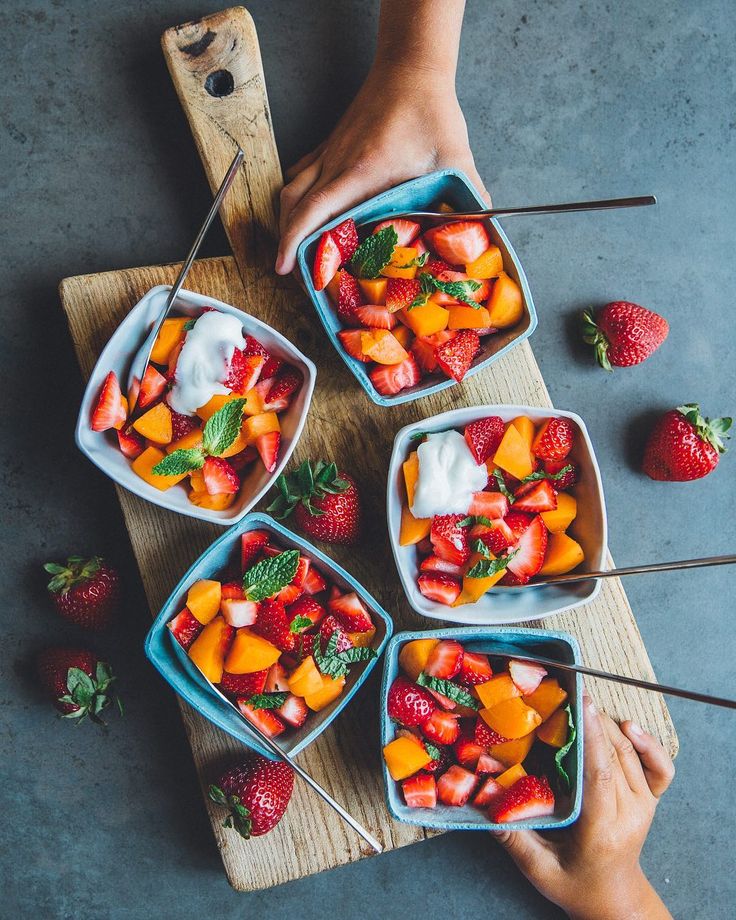 But we can shape and adjust the child's taste preferences through training, systematically offering the child foods with different tastes, including sour, bitter green vegetables
But we can shape and adjust the child's taste preferences through training, systematically offering the child foods with different tastes, including sour, bitter green vegetables - Whole cow's milk is not recommended for children under 12 months of age. The use of cow's milk is associated with the intake of an increased amount of energy, protein, fat, and lower - iron. Therefore, children who consumed large amounts of cow's milk at an early age had a higher risk of developing iron deficiency anemia
- Eating more protein when complementary foods increase the risk of overweight and obesity, especially in individuals with a predisposition to this, so protein intake should not exceed 15% of energy intake during the day
- The baby's requirement for iron is very high during the entire period of complementary feeding, therefore it is necessary to ensure the provision of iron-rich foods, especially for breast-fed children
- Allergenic products can be administered from 4 months of age at any time, as it is during this period that immune tolerance to the allergen is formed.
For example, children at high risk of developing allergic reactions to peanuts should be administered at 4-12 months of age under specialist supervision. No relationship was found between the timing of the introduction of allergenic complementary foods and the development of allergic or immunological diseases. However, this does not mean the need for early introduction of allergenic products to everyone, but it emphasizes that there is no need to postpone the introduction of allergenic products after 4 months for a longer period;
- Gluten can be offered to a child aged 4-12 months, however, large amounts of gluten should be avoided during the first weeks after initiation of its introduction, thereafter a safe amount has not been established. The type of feeding (breast/artificial) was not identified with the introduction of gluten to reduce the risk of developing celiac disease, type 1 diabetes;
- Sugar or salt should not be added to complementary foods, and sweetened drinks and juices should be avoided.
 Sugary drinks are liked by babies in the first months, but if they are not given, but after 6 months, the children no longer like them very much. Sugar affects future eating behavior. Sugar is an important factor in the development of caries - it contributes to caries, as glucans can be formed, which increase the adhesion of bacteria to tooth enamel, disrupt the diffusion balance of acid and buffer systems, which ultimately contributes to damage to the enamel.
Sugary drinks are liked by babies in the first months, but if they are not given, but after 6 months, the children no longer like them very much. Sugar affects future eating behavior. Sugar is an important factor in the development of caries - it contributes to caries, as glucans can be formed, which increase the adhesion of bacteria to tooth enamel, disrupt the diffusion balance of acid and buffer systems, which ultimately contributes to damage to the enamel. - Vegetarian diets are contraindicated in young children due to the risk of vitamin B12, iron, zinc, folate, long-chain fatty acid, protein and calcium deficiencies, which can lead to irreversible adverse effects and impaired cognitive development;
- Vegetarian diet can only be used under the close supervision of a doctor and nutritionist, with the obligatory additional administration of vitamins B, D, iron, zinc, calcium, proteins, PUFAs, which can ensure the appropriate growth and development of the child.
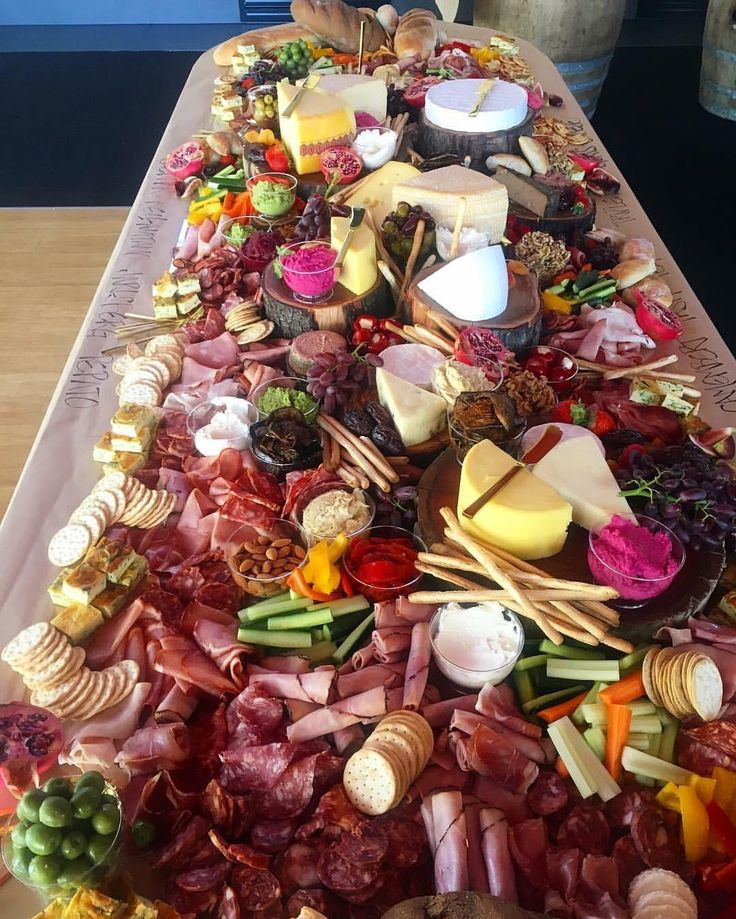 It is important that parents should be aware of the risk of irreversible harmful consequences (mental disability, death of the child) that may develop if they do not follow the recommendations of specialists.
It is important that parents should be aware of the risk of irreversible harmful consequences (mental disability, death of the child) that may develop if they do not follow the recommendations of specialists.
General rules for the introduction of complementary foods for children of the first year of life:
- Introduce the first complementary foods It is better in the morning feeding 9-11 in the morning , to follow the reaction of the child to the new product.
- Without added sugar and salt .
- Give the first complementary food to the child when he is calm and not tired .
- Start with 0.5-2 teaspoons. If the child refuses, do not insist, try to give later or the next day.
- If the reaction is normal - no rash, no skin changes, no stool changes, double the dose the next day.
 Gradually bring the baby's first complementary foods to the age norm 80-200 g
Gradually bring the baby's first complementary foods to the age norm 80-200 g - If there is an allergic reaction or other intolerance reaction - refuse to introduce this complementary food for three days, if the adverse reaction occurs again - do not give this product, contact your pediatrician.
- Each subsequent new complementary food must be one-component only: marrow, cabbage, broccoli, buckwheat, meat, etc.
- Mixed food dish give when the child has already become acquainted with all the products separately.
- It is not advisable to introduce new products three days before and after vaccinations.
If you are thinking about introducing complementary foods, then your child should already have certain signs of readiness for this:
- Holds head
- Able to stand alone, practically without support, sit on a special highchair with side support
- Opens mouth when a spoonful of food is brought
- Turns away from a spoonful of food when not hungry
- Closes mouth with spoon in mouth holds food in mouth and then swallows rather than pushing or spitting it out
The first complementary foods at 4 months
The age of 4 months as the minimum for the introduction of complementary foods was also chosen because at 4 months the child's gastrointestinal tract becomes more mature: the initially increased permeability of the small intestine mucosa decreases, the number of digestive enzymes, a sufficient level of local immunity is formed, the child acquires the ability to swallow semi-liquid and thicker food, associated with the extinction of the “spoon ejection reflex”.
Therefore, to the question whether it is necessary to give complementary foods to a 3-month-old baby , one can unequivocally answer: no, it's too early!
But 4 months, this is the time when you can think about the introduction of complementary foods. At the same time, it should be remembered that at the age of 4 months, the child has enough mother's milk or a highly adapted milk formula for its full development. In addition, when they talk about complementary foods at 4 months, they usually mean the end of the 4th month of life. It is important to continue breastfeeding in parallel with the introduction of complementary foods.
Video: L food at 4 months
If you enter PROPRAMS on the 4th month of life of the child -usually this one-component Vegetable or fruit puree , if the child is not well gained well.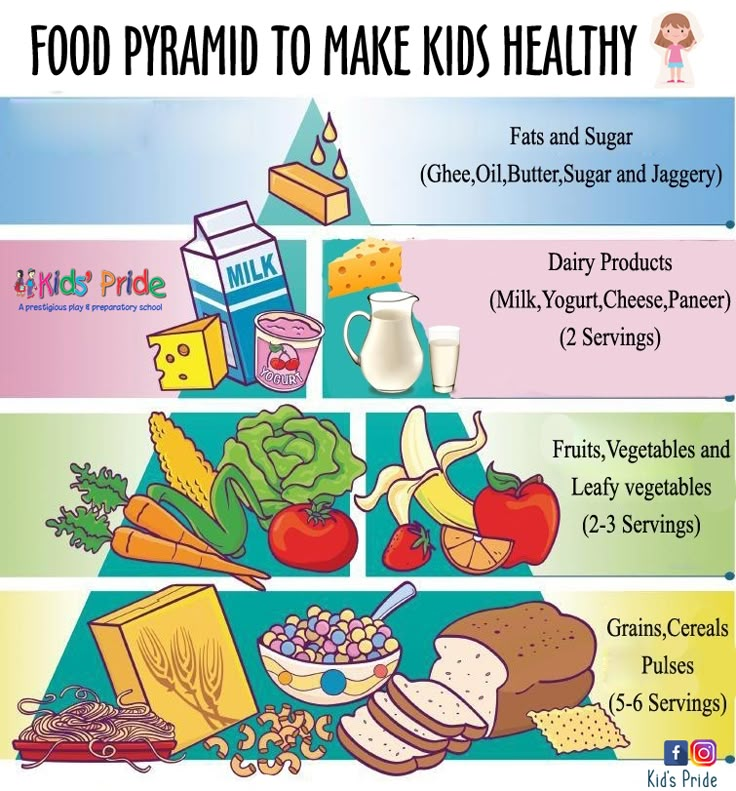 , then it can be gluten-free porridges: rice and buckwheat . It is better to start with vegetable puree. Kids are smart and if he tries a sweeter fruit puree, he can refuse vegetable puree for quite some time and you may have difficulty introducing this very healthy dish.
, then it can be gluten-free porridges: rice and buckwheat . It is better to start with vegetable puree. Kids are smart and if he tries a sweeter fruit puree, he can refuse vegetable puree for quite some time and you may have difficulty introducing this very healthy dish.
What is useful in vegetable supplements and what is the best way to prepare it?
Vegetable puree - for the first feeding can be prepared from cauliflower, zucchini, pumpkin, broccoli - these are low-allergenic foods, are among the ten most useful vegetables in the diet of children, contain a large amount of healthy proteins, fiber and vitamins, microelements ! Fiber helps move food through the digestive tract and promote beneficial microflora in the gut. Pectins absorb and remove toxins from the baby's body. Vegetables have a positive effect on the acid-base balance of the body, creating conditions for the proper functioning of all organs and systems.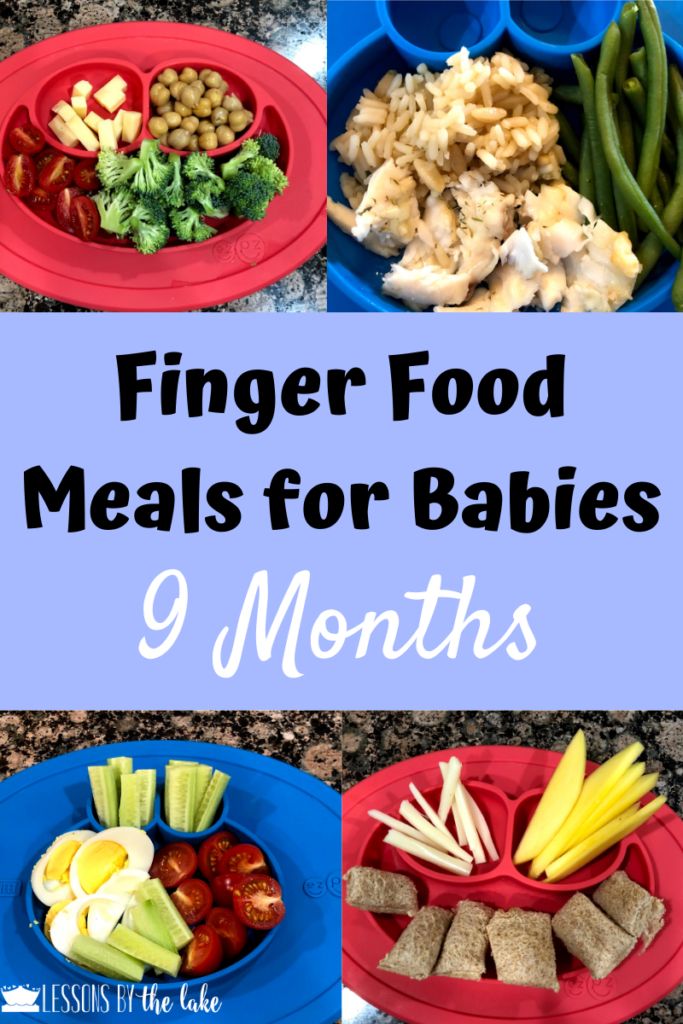
Cauliflower - is a good source of fiber, protein, minerals and vitamins: A, B1, B2, B3 (PP), B6, as well as a small amount of vitamins K, D and tocopherol (vitamin E). In the inflorescences of cabbage there is a lot of magnesium, sodium, potassium, phosphorus, calcium, iron. It contains twice as much iron as green peas, peppers and lettuce. Cauliflower protein is easily digestible and its content is quite high. Cauliflower protein contains essential vitamin U (methionine). It is one of the essential amino acids that cannot be synthesized by the human body. Other essential amino acids are also present in a small amount: arginine, tryptophan.
Zucchini - rich in vitamins and microelements. It contains potassium, magnesium, phosphorus, calcium, vitamins C, B1 and B2 and others, folic acid. Which plays an important role in the processes of hematopoiesis. Zucchini is rich in such important trace elements as iron and copper.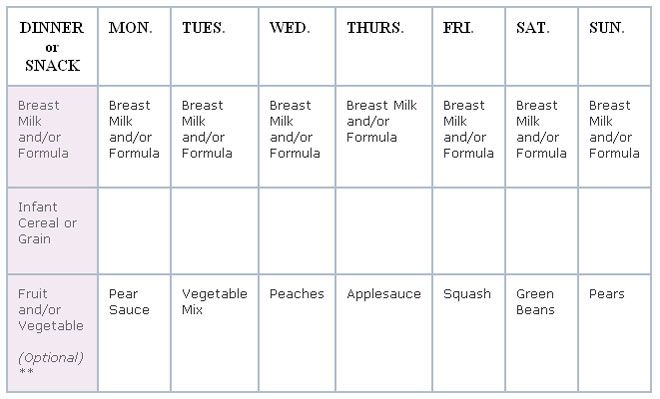 They are necessary for the formation of nervous tissue, normalization of metabolism, as well as for the formation of hemoglobin, which is a good prevention of anemia.
They are necessary for the formation of nervous tissue, normalization of metabolism, as well as for the formation of hemoglobin, which is a good prevention of anemia.
Broccoli is a very useful vegetable, which is a kind of cauliflower. Pleasant soft taste and good digestibility of the product, unique composition have a beneficial effect on the health of both adults and children. Eat unopened cabbage inflorescences. This is also a low-allergenic vegetable, rich in protein, fiber, vitamins, calcium, iron, trace elements and even phytoncides. The content of calcium and magnesium is sufficient to balance the functioning of the nervous system, ensure the normal regulation of the child's sleep and wake cycle, and good stress resistance. A child with such nutrition becomes calmer, less excited and naughty.
Broccoli is the leader in choline and methionine content. Only 50 g of broccoli provides the baby with a full set of nutrients for a day.
Pumpkin is the largest vegetable on Earth. It is one of the ten most useful vegetables in the diet of children, contains a large amount of useful proteins, fiber and vitamins, including beta-carotene, vitamin C, E, K, iron, potassium, magnesium, trace elements that are indispensable for children's nutrition, as they strengthen immunity and help fight inflammation, have a beneficial effect on the nervous system. By the content of carotene, pumpkin exceeds carrots by 5 times.
It is one of the ten most useful vegetables in the diet of children, contains a large amount of useful proteins, fiber and vitamins, including beta-carotene, vitamin C, E, K, iron, potassium, magnesium, trace elements that are indispensable for children's nutrition, as they strengthen immunity and help fight inflammation, have a beneficial effect on the nervous system. By the content of carotene, pumpkin exceeds carrots by 5 times.
Vitamins and microelements contained in pumpkin help the child grow, provide healthy sleep, are responsible for the condition of the skin and eyes, improve metabolic processes, and accelerate the removal of harmful substances from the child's body. Due to its beneficial qualities, pumpkin can be one of the first types of complementary foods for an infant.
All vegetable purees have a specific vegetable smell, this is absolutely normal
0127
Introduction of vegetable puree
Vegetables should be introduced into the child's menu gradually. Start giving each new vegetable in the form of a monocomponent puree in the amount of ½ teaspoon, preferably at breakfast, so you can track the manifestations of food allergies or intolerance reactions to this product. If all is well, then the next day, offer him a teaspoon. So gradually you need to bring the portion to 50-100 grams. A serving of vegetable puree per day for an 8-month-old baby is approximately 80 grams. In a year, you can increase up to 150 grams. The next product can be administered no earlier than 4-5 days later. If a child has skin rashes, his stool has changed, then you need to remove the product from the diet and consult a pediatrician.
Start giving each new vegetable in the form of a monocomponent puree in the amount of ½ teaspoon, preferably at breakfast, so you can track the manifestations of food allergies or intolerance reactions to this product. If all is well, then the next day, offer him a teaspoon. So gradually you need to bring the portion to 50-100 grams. A serving of vegetable puree per day for an 8-month-old baby is approximately 80 grams. In a year, you can increase up to 150 grams. The next product can be administered no earlier than 4-5 days later. If a child has skin rashes, his stool has changed, then you need to remove the product from the diet and consult a pediatrician.
If the child does not like the dish, for example, broccoli, do not give up and continue to offer this vegetable in small quantities - 1-2 spoons a day, maybe not even once, but 2-3 times before meals, and after 7 - 10, and sometimes 15 days, the baby will get used to the new taste. This diversifies the diet, will help form the right taste habits in the child.
Fruit puree introduction
Fruit puree is a definite alternative and addition to vegetables. It can be made from apples, bananas - by the way, do you know what a berry is?, sweet varieties of pears. These fruits contain substances useful for babies, vitamins and minerals, including iron, which is extremely necessary for children. Prune puree is somewhat separate, it has a good effect on the baby's digestion, especially with a tendency to constipation, and, of course, also contains many useful substances.
Porridge in the diet of a child in the first year of life.
Porridge can be introduced into the baby's diet at the end of 4 months or at the fifth, sixth month of life. As a rule, they go as a second food after vegetable or fruit puree. But if your child is not gaining weight very well, or you have been feeding your child with breast milk or infant formula until almost the end of 6 months, then complementary foods can be started with the introduction of cereals.
It is important to start with one-component, low-allergenic cereals which does not contain gluten : this is buckwheat, rice, corn porridge .
gluten-containing cereals include: wheat, oats, rye, barley, millet .
According to modern data , the period of introduction of gluten into the child's diet is not of fundamental importance, but the latest recommendations draw attention to the fact that its amount in the baby's diet should not be large. Therefore, it is better to add semolina and oatmeal to other porridge in a limited amount, and not to give it on its own. No relationship was found between the timing of the start of complementary foods that contain gluten and the development of celiac disease in a child. If your child hasn't tried porridge yet, start with a dairy-free, gluten-free, one-ingredient buckwheat or rice porridge.
Rice - very useful for growing baby. It has a low content of vegetable proteins, therefore it is easily digested and is especially useful for toddlers with unstable stools. Rice has a high nutritional value and, to a certain extent, protects the delicate intestines of the baby due to its enveloping effect. This is a hearty and nutritious dish with a good content of carbohydrates and proteins, potassium and magnesium, calcium and phosphorus, beneficial amino acids and vitamins. It replenishes energy costs, energizes and gives strength. Rice is not recommended for overweight children and those who suffer from severe constipation.
Gluten-free buckwheat porridge - very nutritious and rich in iron, fiber, rich in various vitamins and microelements. This is also a good option for starting a child's acquaintance with adult food. These porridges can be prepared with water, breast milk, milk formula, which your child is used to. No need to add salt and sugar.
No need to add salt and sugar.
Rules for introducing porridge into baby food
If the child already eats porridge from 5 months, then at 6 months you can offer a more complex porridge - for example, rice porridge with apricot or raspberries, rice porridge with banana (this is very successful a combination both in taste and in its properties) or even more complex porridge - corn-rice with banana.
Over time, apple, banana, pear, plum and prunes, apricot and dried apricots, broccoli, carrots, berries, can be added to the porridge, provided that the child is not allergic to them.
The rules for introducing cereals are the same as for vegetable puree. In order for the child to get used to the new product and its consistency more easily, first prepare 5% porridge (5 g of cereal per 100 g of water), if you make it yourself. Porridge is usually cooked with water, but can be made with breast milk, infant formula. First, give the baby one teaspoon, then, within 7-10 days, bring the volume of porridge of the same percentage to the full volume of feeding (150 g). If all this time the porridge is well tolerated, i.e. there are no skin rashes, the child has stable stools, they switch to a gradual (starting from 20-30 g) introduction of porridge of the same cereal, but already at a 10% concentration (10 g of cereal per 100 g of water). In other words, a thicker porridge is administered no earlier than 7-10 days from the beginning of the introduction of porridge. The complete introduction of 10% porridge to the baby is also carried out in 7-10 days. The third week falls on the complete addiction of the child to a new dish. Only after that you can introduce a new cereal (in the form of 10% porridge) or the next complementary foods.
First, give the baby one teaspoon, then, within 7-10 days, bring the volume of porridge of the same percentage to the full volume of feeding (150 g). If all this time the porridge is well tolerated, i.e. there are no skin rashes, the child has stable stools, they switch to a gradual (starting from 20-30 g) introduction of porridge of the same cereal, but already at a 10% concentration (10 g of cereal per 100 g of water). In other words, a thicker porridge is administered no earlier than 7-10 days from the beginning of the introduction of porridge. The complete introduction of 10% porridge to the baby is also carried out in 7-10 days. The third week falls on the complete addiction of the child to a new dish. Only after that you can introduce a new cereal (in the form of 10% porridge) or the next complementary foods.
Video: feeding porridge
You need to give porridge with a spoon, better in the morning for breakfast.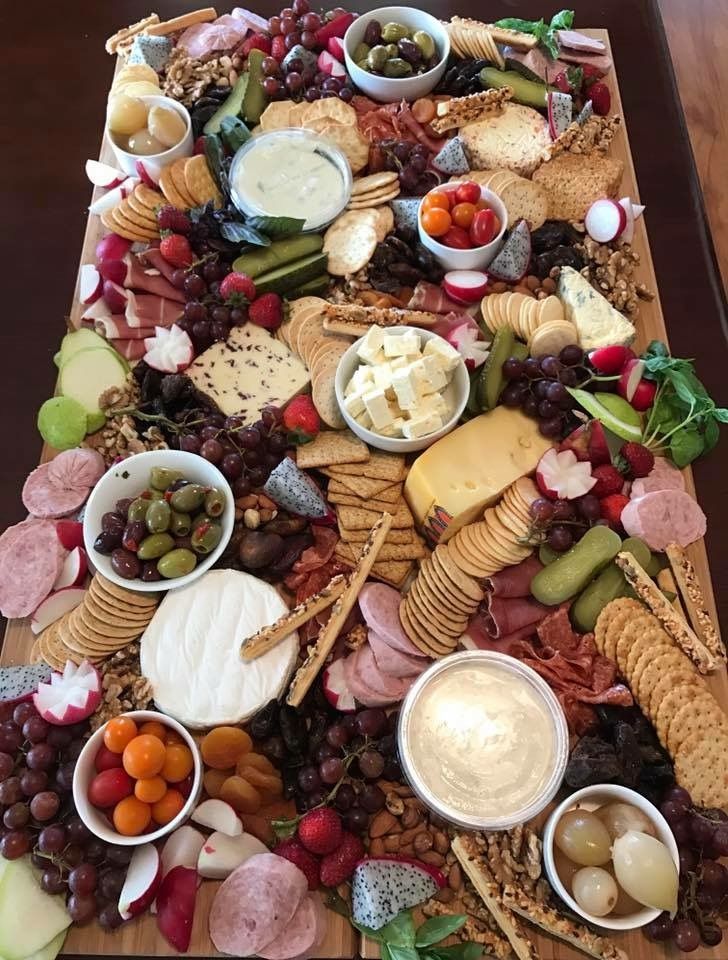 After porridge at the stage of its introduction, the child should be offered breast or milk formula. With artificial feeding, the volume of the mixture after a portion of porridge should be such that, together with porridge, it is 200 ml with five meals a day.
After porridge at the stage of its introduction, the child should be offered breast or milk formula. With artificial feeding, the volume of the mixture after a portion of porridge should be such that, together with porridge, it is 200 ml with five meals a day.
Norms for the introduction of cereals
In the future, the volume of the portion of porridge gradually increases, amounting to:
- 7-8 months - 160-170 ml
- 8-9 months - 170-180 ml
- 9-12 months - up to 200 ml (there is a complete replacement of one feeding of the child with complementary foods.)
Cereal schedule
- Day 1 – 1 teaspoon (5 g)
- Day 2 - 2 teaspoons (10 g)
- Day 3 - 3 teaspoons (15 g)
- Day 4 - 4 teaspoons (20 g)
- Day 5 - 50 ml (50 g)
- Day 6 - 100 ml (100 g)
- Day 7 - 150 ml (150 g)
Meat complementary foods - the rules for introducing meat into the child's diet
Meat is usually the third, very important product of complementary foods, after vegetables and cereals. The meat contains amino acids, complete animal protein, B vitamins (B1, B2, B6 and B12), heme iron, potassium, calcium, zinc, phosphorus, which are necessary for the growth and development of the child. It is very important to understand that mashed meat contains iron, which is easily absorbed. And the addition of meat to vegetables improves the absorption of iron from them, from vegetables.
The meat contains amino acids, complete animal protein, B vitamins (B1, B2, B6 and B12), heme iron, potassium, calcium, zinc, phosphorus, which are necessary for the growth and development of the child. It is very important to understand that mashed meat contains iron, which is easily absorbed. And the addition of meat to vegetables improves the absorption of iron from them, from vegetables.
Iron deficiency can seriously affect the intellectual development of the child, his immunity, hematopoiesis. Since your task is to raise a healthy and intelligent child, meat complementary foods must be introduced without fail and in a timely manner.
Heme iron - found in meat products and easily digestible (red meat-veal, liver), absorption is about 25%.
Non-heme iron - found in plant foods (beans, beans, lentils, peas, nuts, tomatoes, cauliflower, green leafy vegetables, apples, dried fruits, but it is absorbed much worse from plants - only 3-5% Iron absorption from other animal products (eggs, fish) is 10-15%. 0003
0003
It is important to know that human milk enhances , while cow's milk reduces iron absorption .
Timing of the introduction of meat complementary foods
It is advisable to introduce meat puree to a child aged 6-8 months . This, to some extent, depends on when cereals and vegetable/fruit purees were introduced. if your baby has been eating vegetables and cereals since 4 months, meat can be introduced at 6 months. From 7 months it can be administered if the child is not gaining weight. From 8 months to children who started complementary foods at 6 months.
Children at risk of anemia are advised to introduce meat earlier at 5-6 months of age.
It has been proven that only the daily use of children's enriched porridge and meat puree can fully meet the needs of children in iron, zinc and other micronutrients.
You can start meat complementary foods with lean beef, veal , but better with less allergenic poultry meat ( turkey, chicken ), or rabbit, these are the most easily digestible meats.
Goose and pork are fatty for the baby, and the meat of duck and other birds of the reservoirs is also not suitable for the first feeding. They are recommended to give only after 3 years;
Horsemeat is ideal for baby. The product is rich in carbohydrates and proteins, but it is almost impossible to find horse meat for sale.
Meat should be introduced into the child's diet gradually, at lunchtime, at first, a quarter of a teaspoon and, gradually adding, bring it to the daily norm: At 8 months, about 50 g, at 9months-60-70 g.
Video: Power feeding meat
Scheme of meat puree 9000 9000
At first, it is better to give meat with vegetable puree, which the child has already eaten, so he adapts better to the new product, and iron is better absorbed. Children at the end of the first year of life can already be given 3 varieties of mashed meat.
Children at the end of the first year of life can already be given 3 varieties of mashed meat.
Baby menu at 7-8 months
At 7-8 months you can start giving children baby cottage cheese Start with 1/2 teaspoon. Within a month, the daily volume of cottage cheese consumption by a baby can be increased to 30-40 g. In addition, a child of 8 months is recommended to give sour-milk infant formula. But ordinary yogurt from the store should not be given. At this age, the child should receive 5 g of butter and 5 g (1 teaspoon) of vegetable oil, ¼- yolk - 2-3 times a week.
Baby's menu at 9 months old
At the age of 9 months old Your baby is already familiar at this age already usually familiar with: , egg yolk . You may have already met meat . Therefore, at this age, they usually give more complex purees and porridges, less homogenized, of various tastes , gradually preparing him for adult nutrition, increasing the variety and quantity of complementary foods. It is desirable to feed the baby at the table with other family members, he must see how his parents eat with pleasure, he learns from them. The amount of food offered should be based on the principles of actively encouraging the baby to eat, it is necessary to continue to gradually change the consistency and increase the variety of complementary foods, adhering to the recommended frequency of introducing complementary foods.
It is desirable to feed the baby at the table with other family members, he must see how his parents eat with pleasure, he learns from them. The amount of food offered should be based on the principles of actively encouraging the baby to eat, it is necessary to continue to gradually change the consistency and increase the variety of complementary foods, adhering to the recommended frequency of introducing complementary foods.
At this age, the child usually gets complementary foods 3 times a day . His diet depends on the age of the start of complementary foods. If the baby began to give new food at 4-5 months, the list of allowed foods will be much wider than if this happened at 6-7 months. Therefore, all this is very individual, there are no absolutely rigid frameworks and recommendations. On the Internet you will find a lot of different advice on baby food, if you are not sure about something, it is better to consult your pediatrician.
From vegetables the baby can be given what he ate before, mixing them: pumpkin, zucchini, cauliflower, broccoli, carrots and others, adding 1 tsp. vegetable oil . If the baby does not have skin reactions, then you can give beets . It is also possible to give two-, three-component vegetable purees and soups , but only on condition that he is already familiar with these products and has not had a reaction to them.
vegetable oil . If the baby does not have skin reactions, then you can give beets . It is also possible to give two-, three-component vegetable purees and soups , but only on condition that he is already familiar with these products and has not had a reaction to them.
If you have introduced complementary foods, then you need to remember that water is an important part of baby food. You can use purified water or special water for children .
In addition, at 9 months you can give special baby wheat cookies , which the baby will be happy to eat on his own as an adult, white wheat bread, this improves hand motility, improves eating skills, but at the same time he must be supervised.
At this age, you can start giving fish puree from low-fat varieties: river perch, pollock, hake, haddock, pike perch, pollock - start with ½ teaspoon, bringing up to 40-50 g , watching the reaction of the child , give at lunchtime instead of mashed meat, 1-2 times a week.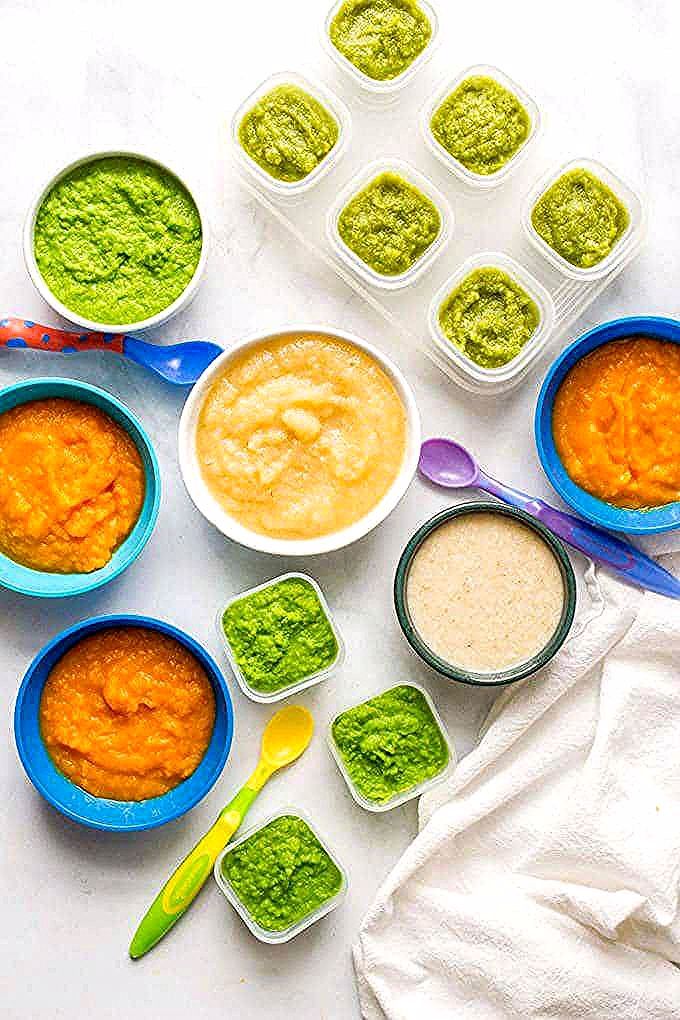 But a number of pediatricians do not advise giving it up to a year, it is a useful, but highly allergenic product.
But a number of pediatricians do not advise giving it up to a year, it is a useful, but highly allergenic product.
10 month old baby menu
B 10 months usually 2 times a day the child receives mother's breast or special milk formulas . Various porridges : buckwheat, rice, corn, oatmeal, wheat, semolina porridge . Add 5-10 g of butter to cereals . At this age, it is already possible to make complex cereals from 2-3 cereals with which the child is familiar, add various fruits, vegetables: apple, banana, pear, plum and prunes, apricot and dried apricots, broccoli, carrots, berries , provided that the child is not allergic to them, or use ready-made cereals with fruit.
From vegetables the baby can be given what he ate earlier, mixing them: pumpkin, zucchini, cauliflower, broccoli, carrots, beets and others, adding 1 tsp. vegetable oil . It is also already possible to give two-, three-component vegetable purees and soups, but only on condition that he is already familiar with these products and he did not have a reaction to them.
vegetable oil . It is also already possible to give two-, three-component vegetable purees and soups, but only on condition that he is already familiar with these products and he did not have a reaction to them.
At this age, the baby already usually eats about 40-50 g of baby meat puree from chicken, turkey, rabbit , with good tolerance to cow's milk proteins from veal or beef. If he has been eating meat for a month or more, you can start giving him two-component meat purees , such as chicken and turkey.
At this age, fish puree from low-fat varieties is usually started: river perch, pollock, hake, haddock, pike perch, pollock with ½ teaspoon, bringing to 40-50 g, monitoring the reaction of the child, it is better to give at lunch time instead of meat puree, 1-2 times a week .
At 10 months 2 times a week should be given baby cottage cheese . Start with 1/2 teaspoon if you have not given it before, the daily amount of cottage cheese at this age 40-50 g .
Start with 1/2 teaspoon if you have not given it before, the daily amount of cottage cheese at this age 40-50 g .
It is recommended to give special sour-milk baby formulas.
At this age, a child can receive 5-10 g of butter and 5 g (1 teaspoon) of vegetable oil, and 2-3 times a week½ - yolk .
Child's menu at 1 year old
The child is one year old. He has already grown up, he already has 6-10 teeth, with which he gnaws everything he sees, he is interested in chewing food, his digestive enzymes already work well and he has already become acquainted with various products: vegetable and fruit purees, various cereal cereals, meat and fish, sour-milk mixtures. In fact, he is already prepared for the transition to a more adult diet. In a year, changing the diet involves turning to new products and gradually changing the way they are prepared and the degree of grinding.
You need to eat 5 times a day with an interval 3.5-4 hours .
semi-liquid dishes should still remain the basis of nutrition, but not only mashed dishes, but also containing small pieces of food . Too dry food should not be given to the baby yet, as he may have difficulty swallowing.
In the year the child already tries to eat with his hands and he should be encouraged to do so. Finely chopped, soft foods can be given eg: small pieces of soft fruit, vegetables, cheese, well-cooked meat, pasta , etc. and foods that dissolve quickly, children's cookies, children's bread - as food with the help of hands.
Must avoid products that can enter the respiratory tract and cause asphyxia - sausages and other hard meat products , nuts (especially peanuts), grapes, raisins, raw carrots, popcorn, round candies . Hold off on this for now.
Hold off on this for now.
In a year, part of the children are without mother's milk. But if your baby is still not weaned - do not rush, if possible, give him a breast before bed at night. You can also breastfeed between main meals. At this age, the child receives all the main vitamins and minerals from food, but he can get a number of biologically active components from breast milk.
Dairy products
Dairy products still occupy an important place in the child's diet, it is a source of calcium, B vitamins, protein, milk sugar and fat. It is better to use special baby milk (marked with a triple on the packaging), baby fermented milk products: kefir, yogurt in total 500-600 ml per day .
Cottage cheese
The child should be given cottage cheese. The daily dose of cottage cheese after 1 year can be increased up to 70 g per day . It can be given pureed or combined with fruit puree, pudding, casserole. This contributes to the development of chewing skills.
It can be given pureed or combined with fruit puree, pudding, casserole. This contributes to the development of chewing skills.
Butter
Butter can be added to cereals or smeared on wheat bread, cookies in a dose of up to 12 g per day.
Low fat sour cream and cream
After 1 year, you can give low-fat sour cream and cream in small quantities.
Vegetables
Every year a child must be given various vegetables , it is good to combine them with protein products, meat . The vegetable diet can now be diversified with green peas, tomatoes, turnips, beets, carrots, spinach in the form of mashed potatoes. Legumes are still better not to give.
Fruits and berries
After 1 year, you can gradually introduce the baby to new fruits and berries: strawberries, cherries, cherries, kiwi, currants, gooseberries, chokeberries, sea buckthorn, raspberries, blackberries, cranberries, blueberries, lingonberries and even citrus fruits . But do it gradually, watching the reaction of the child. Berries with a dense peel (gooseberries) are best mashed, while soft juicy fruits (peaches, strawberries, apricots, kiwi) can be offered to the baby in pieces.
But do it gradually, watching the reaction of the child. Berries with a dense peel (gooseberries) are best mashed, while soft juicy fruits (peaches, strawberries, apricots, kiwi) can be offered to the baby in pieces.
Daily dose of fruits - approx.
Meat products
Meat products can be given in the form of steam cutlets, meatballs, meatballs, meat soufflé and pudding in an amount up to 100 g daily - beef, veal, lean pork, rabbit, turkey, chicken.
Fish
Fish can be given once or twice a week for 30-40 g per meal as a substitute for meat dishes
Eggs
Chicken, quail eggs give boiled or in the form of omelettes in milk, you can try with vegetables.
Kashi
Porridge can be cooked from rice, oatmeal, buckwheat, corn, millet, semolina. At this age, they should still have a uniform consistency, so it will be easier for him to swallow. You can use ready-made industrial, children's instant cereals, for example, various multi-cereal cereals, in which fruits, crackers, cereals have already been added. Give 1 time per day.
At this age, they should still have a uniform consistency, so it will be easier for him to swallow. You can use ready-made industrial, children's instant cereals, for example, various multi-cereal cereals, in which fruits, crackers, cereals have already been added. Give 1 time per day.
Water
Be sure to give the child to drink clean water, better than bottled water for children, as much as he wants . In addition to her baby can drink vegetable and fruit juices, dairy products, compotes, weak tea.
No need to give:
no need to give confectionery and sweets . From sweets at this age, you can sometimes give marmalade, dried fruits and cookies.
Do not give sausages and sausages , they are rarely prepared from high quality meats and are rich in various food additives
Calories and volume
0124 1200 ml .




